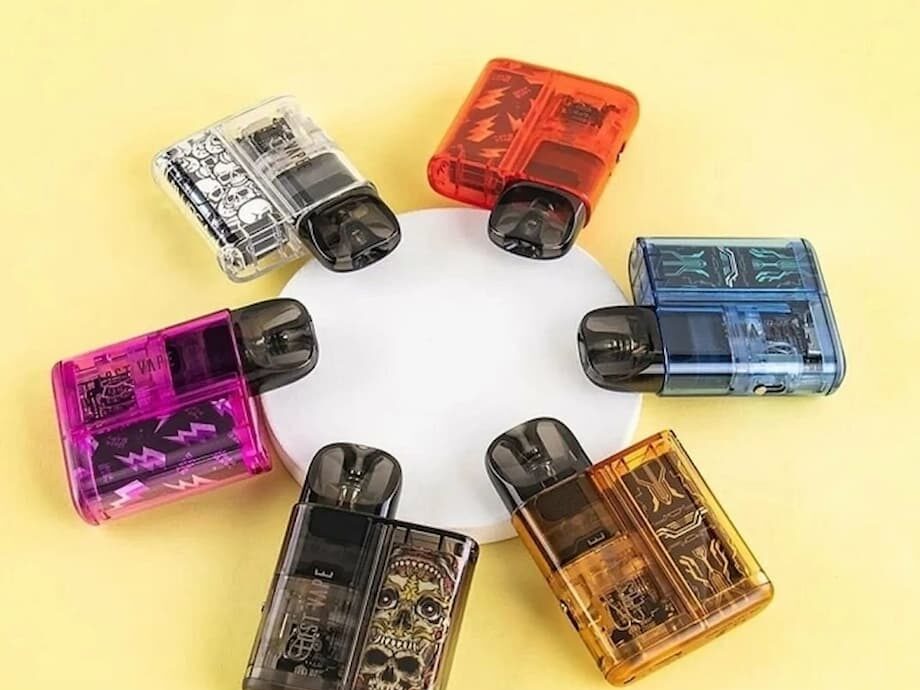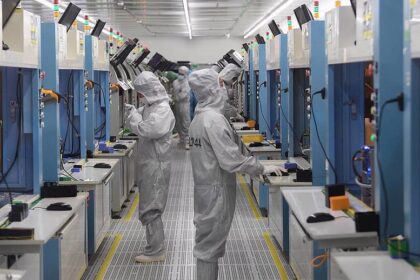Malaysia grapples with toxic vape litter and a quiet fire risk
Discarded vape devices are piling up in bins, drains, and landfills across Malaysia, converting a health product controversy into an electronic waste problem. Fire services, landfill managers, and recyclers warn that a mix of lithium batteries, plastic bodies, and nicotine residues is creating two dangers at once, fire incidents and toxic contamination. The scale is large. Malaysia has more than 1.4 million adult users and hundreds of thousands of minors. School authorities recorded nearly 20,000 cases in 2024, according to the Education Ministry.
- Malaysia grapples with toxic vape litter and a quiet fire risk
- Why discarded vapes can ignite and pollute
- How big is the problem in Malaysia
- Recycling hurdles and why most vapes end up in dumps
- Take back and producer responsibility are gaining traction
- Rules and enforcement are tightening, but gaps remain
- What consumers, schools and retailers can do now
- The Bottom Line
Most used vapes are treated like normal household trash. Once compacted in trucks or buried in active landfill cells, their batteries can short circuit. Liquids left in pods can leak. Over time, metals and nicotine may enter soil or waterways through leachate.
Senior officials and independent experts have started to sound the alarm, and some retailers have begun small take back trials. The government is weighing stronger controls on sales and use. The immediate challenge is how to manage a waste stream that looks like plastic, but behaves like an electronic device.
Why discarded vapes can ignite and pollute
A vape device is essentially a small electronic gadget. It contains a lithium ion battery, a circuit, a metal or plastic body, a heating element, and a cartridge or pod with liquid. Each component, if mishandled at end of life, creates well understood waste risks.
Lithium batteries and fires
Lithium ion cells can enter what engineers call thermal runaway when they are crushed, punctured, or overheated. Inside a garbage truck, loads shift and compact, which can crack a battery separator and cause a short. In landfills, methane from rotting food and the presence of oxygen can feed a fire once a damaged cell vents hot gases.
Fire and Rescue Department director general Nor Hisham Mohammad explained the risk in plain terms.
“If tossed into regular bins, they can cause fires in garbage trucks or landfills.”
He added that damaged or overheated batteries in the waste stream could ignite. His agency has seen the same problem with other items that carry small cells, including toys, power banks, and household gadgets.
Toxic liquids and metals
Cartridges and pods can retain nicotine and flavoring chemicals. Research and regulators have listed volatile organic compounds and heavy metals such as nickel, tin, and lead in some e liquids and device parts. When these residues enter landfill leachate, they can travel into soil and water. The World Health Organization has warned about additional harm from improper disposal of emerging electronic products, which can release toxic emissions and residues.
Environmental and waste management specialist Theng Lee Chong warns that most pods look like simple plastic items, so they are not pulled out for special handling. Over time, the plastic body persists while hazardous residues can move through surface runoff and groundwater, with effects that can extend into the food chain.
How big is the problem in Malaysia
A nationwide composition study of 25 landfills in 2023 by the Solid Waste Management and Public Cleansing Corporation found that hazardous household waste made up 1.15 percent of the waste at those sites. Within that fraction, electronic waste accounted for 0.83 percent, while batteries, aerosol cans, and similar items made up 0.32 percent. Food waste, plastics, paper, disposable diapers, and garden waste remain the bulk of what Malaysia throws away, but a rising share of small electronics is now in the mix.
On the consumption side, industry estimates and government data point to at least 1.4 million adult users. The Deputy Education Minister reported nearly 20,000 student vaping cases in schools in 2024. This combination of high usage and disposal in regular trash points to more devices entering the waste stream each week.
Malaysia has put in place the Control of Smoking Products for Public Health Act 2024 (Act 852), which regulates sales, packaging, labeling, and advertising. The law does not ban use nationwide, and several states still permit retail activity. Policymakers have said a broader ban is under review. Singapore has already introduced tougher penalties, with repeat offenders facing fines of up to SGD 2,000 under rules that took effect on September 1.
Recycling hurdles and why most vapes end up in dumps
Despite the presence of valuable materials, many recyclers avoid vape devices. The units are small, the materials are mixed, and safe dismantling takes time.
Design barriers
J Jayahanan, who manages a recycling company, describes a common design problem. Many devices are held together with strong glue. Accessing the battery requires cutting the chassis, which can heat the cell and create a safety risk. Separating the small circuit board, wires, and plastic housing is slow and labor intensive. The value recovered at the end is modest.
Collectors confirm the economic challenge. ERTH founder Mohamed Tarek says processors are rarely keen to receive vapes. Even when collected, many facilities will not take them because the amount of metal is low relative to the effort needed to make them safe to process.
Collection gaps
When a device looks like a plastic trinket, it is easy for consumers to drop it in general waste. Without clear instructions and visible drop off points, most devices will head to landfills. ERTH reports that it receives few direct requests for vape disposal and suspects that the majority go out with household trash.
Other countries offer models for better collection. Finland built an extensive network of no cost drop off points for all electronic waste, backed by a legal requirement for retailers to accept returns and a producer funded system that pays for transport and processing. Malaysia’s domestic collection rate is far lower, and households still rely on informal channels. A more complete framework would help keep small devices like vapes out of landfills.
Take back and producer responsibility are gaining traction
Malaysian experts argue that vape makers and retailers should take back used devices and fund their treatment. Theng Lee Chong describes a take back system at retail level as an effective way to ensure safe disposal, provided the collected units go to licensed facilities for proper dismantling.
Some pilots are underway. ERTH says one vape brand has already run a take back program that gathered thousands of pods, which were handed to a licensed processing partner in line with Department of Environment guidelines. Vape Empire has placed dedicated bins in a small number of stores to receive used products, and international brands have tested recycling networks in selected markets.
S Sri Umeswara, a sustainability officer who works on recycling issues, says a closed loop system can recover materials and reduce dependence on new resources.
“A closed loop system where vapes are collected and recycled is necessary to prevent them from ending up in landfills.”
Turning pilots into a nationwide system would require regulations that make devices easier to dismantle and rules that ensure producers cover costs. Jayahanan proposes screws or rivets rather than permanent adhesive so that batteries can be removed safely. Mohamed Tarek argues that brands should redesign products to raise recycling rates or pay collectors and processors to cover labor and safety measures. Some international makers are already testing product designs that can be separated into battery, casing, sensor, housing, and mouthpiece by hand.
Rules and enforcement are tightening, but gaps remain
Malaysia is also confronting a broader electronic waste challenge. Enforcement agencies have intensified actions against illegal recycling operations and smuggled waste. Recent cases include raids on factories handling hazardous materials without approval and court fines totaling nearly RM 490,000 for improper storage and treatment of lithium batteries and electronic waste.
Natural Resources and Environmental Sustainability Minister Nik Nazmi Nik Ahmad has acknowledged that the country needs stronger coordination among agencies to raise recycling rates and clamp down on illegal sites. The ministry has pointed to the Basel Convention as a key standard and says stricter enforcement is essential to prevent dumping and safeguard workers.
On the health side, the Malaysian Council for Tobacco Control is urging policymakers to keep public health as a higher priority than industry profit. The group points to a heavy burden on the health system from smoking related disease and lists vape litter, disposable devices, and packaging as environmental pollutants that require firm control.
“Public policy must prioritize citizen health, environmental sustainability, and long term social responsibility.”
Policy momentum is building at state level as well. Media reports indicate that Pahang has moved to end retail licensing and plans to phase in a full ban on vape products by 2026. At the federal level, the Health Minister told Parliament that a national ban on sale and use is under consideration. Any change would need careful management to align with Act 852, which already restricts sales to minors, online channels, and marketing.
What consumers, schools and retailers can do now
While laws evolve, immediate steps can cut risks and keep batteries out of the waste stream.
- Consumers: never toss a vape in general waste. If the battery is removable, tape the terminals and store the unit in a nonflammable container until you can bring it to a certified electronic waste collection point or a retailer take back bin. If the battery is not removable, keep the entire device intact and secure for drop off.
- Liquids and pods: keep any remaining liquid sealed. Place used pods in a sealed bag and hand them to an electronic waste collector or a store that accepts returns so that hazardous residues are handled correctly.
- Schools: update campus policies so confiscated devices are secured, labeled, and handed to a licensed collector. Provide age appropriate talks on fire risk and environmental harm so students understand why disposal rules matter.
- Retailers: offer visible take back bins and train staff to explain safe disposal. Work only with licensed collectors and insist on traceable downstream processing records.
- Local councils and agencies: integrate small electronics into collection days. Publish online maps of drop points and add signage at community centers and shops. Coordinate with fire services to track and reduce battery related incidents in trucks and transfer stations.
- Producers: redesign products for easy battery removal and safe dismantling. Fund collection and processing through extended responsibility programs and publish transparent reports on volumes collected and treatment outcomes.
The Bottom Line
- Vape devices contain lithium ion batteries that can ignite when crushed, punctured, or overheated in trucks and landfills.
- Pods and device residues can leach nicotine and metals into soil and water, adding a toxic burden to the environment.
- A 2023 study at 25 landfills found hazardous household waste at 1.15 percent of the waste stream, with electronic waste at 0.83 percent.
- Malaysia has more than 1.4 million adult users and rising youth use, feeding a steady flow of discarded devices.
- Recycling is hampered by glued designs, safety hazards, and low economic value for processors.
- Experts are calling for retail take back and producer funded responsibility to cover collection and treatment.
- Enforcement against illegal waste handling is increasing, and courts have issued fines for improper storage and disposal of hazardous materials.
- Some states are moving toward stricter controls, while the federal government reviews broader options within the framework of Act 852.
- Practical steps by households, schools, retailers, councils, and producers can reduce fire risks and pollution right now.












